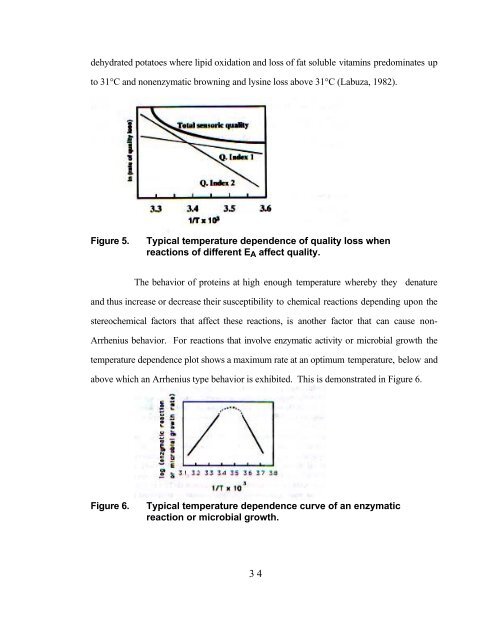the handbook of food engineering practice crc press chapter 10 ...
the handbook of food engineering practice crc press chapter 10 ...
the handbook of food engineering practice crc press chapter 10 ...
You also want an ePaper? Increase the reach of your titles
YUMPU automatically turns print PDFs into web optimized ePapers that Google loves.
dehydrated potatoes where lipid oxidation and loss <strong>of</strong> fat soluble vitamins predominates up<br />
to 31°C and nonenzymatic browning and lysine loss above 31°C (Labuza, 1982).<br />
Figure 5.<br />
Typical temperature dependence <strong>of</strong> quality loss when<br />
reactions <strong>of</strong> different E A affect quality.<br />
The behavior <strong>of</strong> proteins at high enough temperature whereby <strong>the</strong>y denature<br />
and thus increase or decrease <strong>the</strong>ir susceptibility to chemical reactions depending upon <strong>the</strong><br />
stereochemical factors that affect <strong>the</strong>se reactions, is ano<strong>the</strong>r factor that can cause non-<br />
Arrhenius behavior. For reactions that involve enzymatic activity or microbial growth <strong>the</strong><br />
temperature dependence plot shows a maximum rate at an optimum temperature, below and<br />
above which an Arrhenius type behavior is exhibited. This is demonstrated in Figure 6.<br />
Figure 6.<br />
Typical temperature dependence curve <strong>of</strong> an enzymatic<br />
reaction or microbial growth.<br />
34














